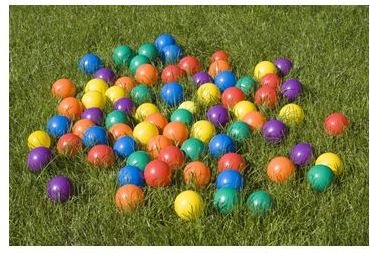Balance Exercises for Young Athletes
Objectives
- To introduce the students to rhythmic movement
- To practice balance and control
- To introduce physical education activities that enhance student’s balance
Materials
Balls
- Ribbons
- Hoops
- Music arrangement with varying tempo
Introduce
Be sure the students have enough room to move around freely. Before beginning the activity, introduce students to rhythmic gymnastics. It first became an Olympic event in 1984. Athletes use five types of hand apparatus and continually move while maneuvering and balancing a different object in each event.
Teach
Warm Up
Set up activity stations or review with the students any dance steps they may have learned. They can do a quick jog around the gym as well.
Balance
Students will begin by performing the dances they learned, the schottische and grapevine. Give each student a ball and have them perform movements to the music and balance the ball in their outstretched hand.
Freeform Movement
Students can choose a ribbon or hoop for the following activity, or hand out what you have available. Explain to students that they will freely move using their prop to enhance their movement. Depending upon space limitations, students can move about or stay in place. Play the music selection one time through for the students. Have students point out the different tempos and rhythms they hear. Then have them stand and use their prop to dance and move with the music. Encourage them to change their movements as they hear changes in the music.
Additional Activities
- Have students practice movements with their props without the music. They can instead respond to prompts that you call out or to a rhythm you clap.
- Try other objects to balance such as Frisbees.
Challenge Options
- Have students try and balance two balls while doing the movements.
- Have students individually or in groups make a dance or sequence of movements with their props. Encourage them to include a beginning, middle, and end.
Assess
Ask students which objects were easiest to manipulate and why. Also discuss how the tempo of the music affected their movement and their connection to the music and movements. Were the slower tempos easier to move with or those that were faster or more upbeat?
